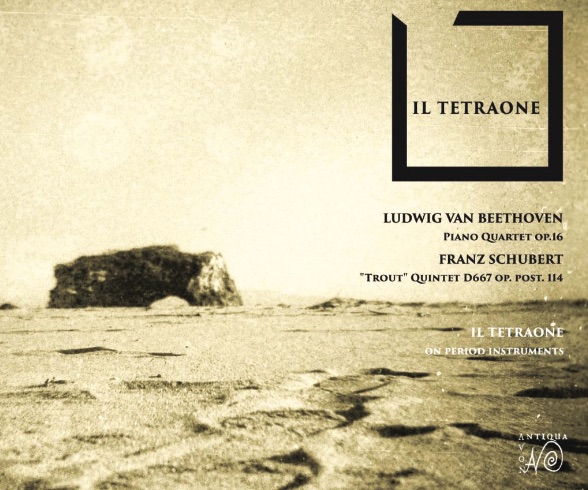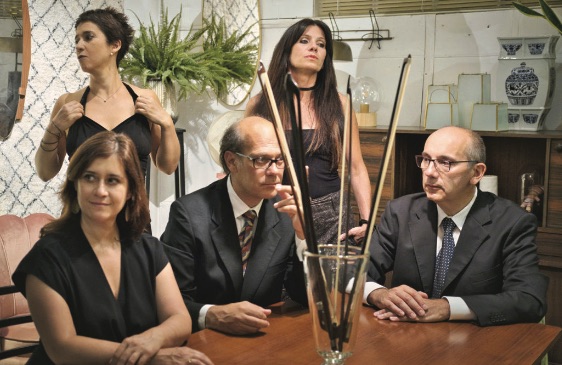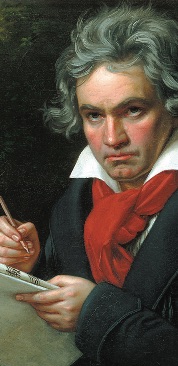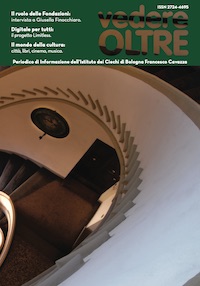In an older edition of the Tullio De Mauro dictionary, the entry "Tetraone" is described as a "common name of some birds of the family Phasianidae." Other sources add that these gamebirds, also called landfowl, are widespread in the United States of America and much of Canada.
I admit that I didn't have the slightest idea of the meaning of that term, so much so that the almost proverbial phrase from Manzoni came to mind, at first and with involuntary automatism: "Carneades! Who was he?"
Paolo Ballanti, cellist of this branch of the Accademia Bizantina formed to explore a musical repertoire infrequently revisited, answered a particular question about the idea of naming the new musical group. It came to him from a book of fairy tales often read to one of his daughters and which has that bird as its main character. The possible play on words with the combination of the Greek prefix "tetra" and the English "one" (4 + 1) made "tetraone" the perfect name for the quartet with piano which, occasionally, introduces a fifth instrument, the double bass. In the accompanying pamphlet, a bright and inviting image presents the quartet members, with double bass player Giovanni Valgimigli slightly in the background. As in giving his willingness to expand the group in future circumstances.

This is already partially the case on this debut CD, which features the musicians performing Beethoven's Quartet for Piano and Strings in E-flat Major Op. 16 and the Quintet in A Major D667, Op. Post. 114 "The Trout" by Schubert.
It was Beethoven himself who transcribed the original quintet for piano and wind instruments for this formation. As is evident, Beethoven had before him the model of Mozart's Quintet K 452, a composition written in the same key and already belonging to the great maturity of the Salzburg musician, who considered it the best thing he had written up to that moment (1784). Perhaps also thanks to the influence of that illustrious predecessor, Beethoven's valuable youthful experiment (1796/7) achieved immediate success, so much so that he suggested the transcription presented on this Novantiqua CD.
The reasons for this dual release appear to be not entirely established. The decision to transcribe the work for piano and strings was probably motivated by the desire to increase the awareness of the work to a wider audience. I dare suggest that the future giant of Bonn did not yet feel ready to approach the venerated Salzburg and, therefore, preferred to use a less demanding and more traditional ensemble. Although almost the same age at the time of composition of the two chamber pieces, the Mozart of 1784 is already unequivocally at the height of its expressiveness. In the Beethoven of 1797, on the other hand, the titanic developments that would lead him to be one of the greatest geniuses in the history of music could perhaps not yet be clearly foreseen. The transcription for piano and strings entails a more natural timbre fusion, it allows a sonic amalgam to highlight the discipline of a musical group, more than five soloists can achieve.

If the balance between the musical parts assigned to the piano and to the winds makes the Quintet K 452 a perfect example of formal cohesion, in Beethoven's quintet it is the piano that mainly weaves the threads of the composition. This prevalence appears more evident in performances with modern instruments, especially if someone sitting at the piano is not willing to sacrifice the potential of the instrument to the reasons of the music: in that case, the combination of piano and wind instruments could result in a performance by five soloists and not a unified interpretation by a cohesive ensemble.
In Tetraone's interpretation, on the other hand, Valeria Montanari's fortepiano is a primus inter pares that blends and merges, without overpowering, with the sound of the strings, in some rare circumstances slightly sharp in the specific part of the violin. This is the case with the opening "Allegro vivace" of the very famous Schubertian quintet. A circumstance of little importance, compared to the great fluidity and mastery that permeates the entire piece.
Even more evident than in the Mozart/Beethoven relationship, in the one that sees Schubert side by side with the Bonn-born musician, the early maturity of the former seems to cancel out the late youth of the latter. But, again, the use of ancient instruments significantly mitigates this hiatus and brings Beethoven and Schubert closer together in perspective.
In truth, is it possible to say that Schubert, who died at the age of 31, went through a creative period beyond his youth? Or, turning the question around, can it be said that the quintet "The Trout," composed in 1819, is somehow less relevant than its author's important chamber masterpieces? The rhetorical point of the question is obvious.

Beethoven's Op. 16, although rich in undeniable melodic and timbre beauties, especially in the dreamy Andante cantabile, could have made it difficult for the musician's contemporaries to foresee the subsequent explosion of the genius from Bonn. Schubert's posthumous work, however, already offered an extraordinary example of the composer's greatness. If one of Beethoven's last quartets had been placed next to the "La Trota" quintet, beyond the differences in typology and instrumentation, I think that no one would have been able to say that the "little" Schubert would have disappeared before the "giant" Beethoven.
In short, the Beethoven of his youth (this one is evident) is the object of study and veneration in retrospect by those who "already know" about Beethoven's future, with the risk of making him an object of uncritical worship. Whereas for the Schubert of the "Trout" quintet (but, perhaps, for all of Schubert) this risk does not exist.
After this first convincing evidence, we look forward to new interpretations by the Tetraone.





.png)